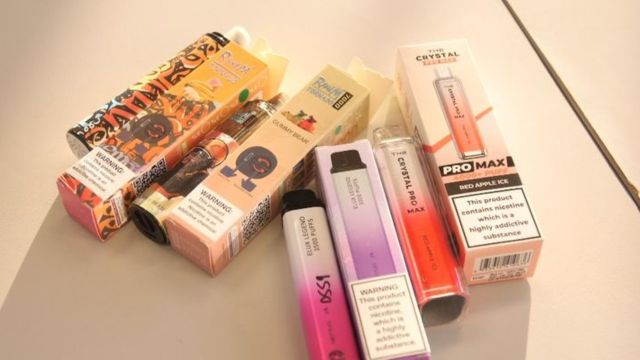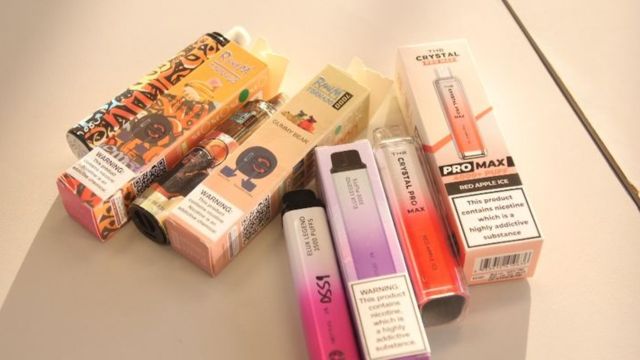In November 2010, a team of around 40 officials from CID and Himachal police raided the Malana village and other surrounding areas in the Parbati valley of Himachal Pradesh, arresting an Italian man in his sixties named Galeno Orazi in the process.
Orazi was arrested from a house in Nerang forest, where he had been staying for several years in direct violation of many legal norms. According to the police, his visa had expired a year before his arrest.
The house was stacked with large quantities of ganja (marijuana). Orazi, in every respect, looked like a native of Malana – with a long beard and wearing the traditional attire of the area.
For the 12-13 years that Orazi stayed in Malana, he was involved in the production and trade of cannabis with the active connivance of the village people, who find easy money in the production of illicit drugs.
The hill state, with its snow-capped mountains and clean air, has always been a preferred destination for the city dwellers.
Malana and Kasol have been preferred destinations for Israeli youth, who visit the place in huge numbers, after their mandatory service in the army, for a therapeutic experience.
However, the therapy is not provided by the peaceful environs of the mountains but with something for which Malana is now known the world over: Malana Cream, a local variety of hashish; a purified resinous extract of cannabis, highly valued in the international market.
Cannabis has always been grown in this area, but was meant for personal consumption and has great level of social acceptance. The local culture, which is guided to a great extent by belief in ‘devta’ (almost every village in Himachal has their own local deities and all major decisions are taken with their permission), treats cannabis as ‘shiv ji ki buti’ and does not see cannabis production as something wrong.
The problem, however, started with the commercialisation of the production and the entry of foreigners. The locals, who were attracted by the prospects of big money, started producing cannabis and trading it in connivance with the foreigners.
Ashok Kumar, SP Narcotics, stressing on this point said, “Earlier, local varieties of cannabis were produced but now hybrid varieties are being grown with the help of foreigners. It is not for personal consumption, rather for trade.”
Regions that are indentified as important for the illicit cultivation of cannabis in Kullu include Malana and Manikaran, Tosh-kutla Regions, Banjar Valley, and the Sainj Valley in the Aani-Khanag Region. In Mandi district, areas where cannabis cultivation is widespread is Chauhar Bali Chowki (Thachi and Dider Jhamach), and the Gada Goshaini (Siraj Region) contiguous with Banjar Valley.
OP Sharma, former superintendent of narcotics control bureau (NCB) Chandigarh and currently posted as Sr. Superintendent (Preventive) of Central Excise & Service Tax, Shimla feels that drug problem in Himachal Pradesh has three aspects: (1) Illicit cultivation of cannabis and opium poppy: the production of respective narcotic drugs thereof (2) the illicit trafficking of the drugs so produced, i.e. the supplies to inter-state and international destinations (3) the drug consumption, i.e. the market within the state and outside.
The cultivation in turn can be categorised in two parts – the organised cultivation on private lands and government/ forest lands, and the unchecked wild growth of cannabis.
According to Sharma, it is the organised cultivation that is of utmost concern. The extent of organisation of the cannabis and opium cultivation can be gauged by this picture taken by Sharma which he shared with Firstpost.
The extent of the problem
The number of cases registered under the Narcotic Drugs and Psychotropic Substances (NDPS) Act in Himachal Pradesh has more than tripled in last decade. 242 people were arrested in 2005 under the NDPS law, which rose to 596 in 2010 and to 622 in 2015.
While the cases registered increased over the years, conviction rates under the NDPS act have been abysmally low. In 2005, the percentage of conviction of those arrested under the NDPS law was 32 percent, which fell to 28.20 percent in 2015.
“We have to think about why conviction rate is so less,” Kumar said.
Looking at the profile of those arrested in Kullu, Chamba and Mandi shows that while majority of them are residents of Himachal, 23 percent are outsiders and 47 percent of those arrested fall in the age group of 20-30.
To discuss the different aspects of the drug problem in Himachal Pradesh, a three day conference starting 18 April was held in the state. It was focused on the problem of illicit cultivation, trade and consumption of cannabis and other drugs and was organised by the Institute for Narcotics Studies and Analysis (INSA) in Kullu.
Going beyond general theorising, the conference brought together all the major stakeholders to deliberate upon the problem of the drug menace in the state and come out with viable solutions.
Himachal Pradesh Chief Minister Virbhadra Singh, speaking on the issue, acknowledged the problem and said that addiction of any types is injurious and there is no country that has not faced the problem of drug abuse.
“It is a big threat to the country and is destroying the present generation and humanity at large. There is a constant war between people who are trading in drugs and people who want to stop this. We have to stop this at any cost”, said Virbhadra Singh.
He added, “Government cannot do this alone, people have to make immense contribution in curbing this menace. Syndicates involved in this are very powerful but we have to destroy them”.
While the reasons behind the drug problem were deliberated upon, at length, it was a serious attempt to propose a solution that was appreciated by all participants. In this context ‘alternative development’ became the focal point of the discussion.
The discussion on ‘alternative development’ centered around finding viable alternate crops that people engaged in illicit farming of cannabis can be motivated to grow. This can only be made possible if those producing cannabis are assured that their income would not be reduced by switching over to other crops.
In this context J C Sharma, managing director HP Horticulture Produce, Marketing and Processing Corporation (HPMC), made a presentation where he talked about a project initiated by HPMC in which a new variety of apple will be grown where cannabis is being currently produced.
The new variety of apples will provide 10-12 times higher yields, which have ready markets as currently India is importing huge quantities of apple from various foreign countries.
If implemented, this alternative to cannabis and opium would not only meet the demand of apples in India but would also result in saving of large amounts of foreign exchange.
In the context of ‘alternative development’, Jahan Pesron Jamas of Bombay Hemp Company, instead of proposing an alternative crop, talked about the utility of cannabis plant itself for use in the industry.
He highlighted that hump fibre, being a very strong material, can be used in fabric, ropes, cosmetics, and for medicinal use. However, he also stressed that more research is needed to develop plants that are low on intoxicating content, making their diversion for recreational purpose difficult, but at the same time making them useful for legitimate industrial and medicinal purposes.
Another problem that was discussed by all panelists was the lack of a detailed survey on the extent of the drug problem. The last survey to ascertain the extent of the problem was done in 2001. Lack of coordination among different authorities like police and Directorate of Revenue Intelligence (DRI) was also marked as a major problem in dealing with the issue.
Lack of coordination among different agencies and political will are major roadblocks in curbing the menace. OP Sharma, who has travelled to the remotest parts of Himachal to understand the reasons behind the persistence of the drug problem, highlights the important reasons for the persistence of the problem through a case study of Malana.
According to Sharma, cannabis consumption is inherent in the culture and the hilly terrain makes the area almost inaccessible to enforcement agencies, making it a safe haven for drug traders.
The fact that there is lack of proper monitoring of the movements of foreigners by the enforcement agencies is also adding to the problem.
In this context, Puneet Raghu, Himachal Police Service (HPS) referred to two NDPS cases where the passport of the arrested person was already expired but investigating agencies failed to book them under foreigners act.
Echoing the same views Ashok Kumar, SP narcotics said that there is a provision that if someone is arrested for indulging in illegal activities he or she can be blacklisted and barred from entering the country again.
“Usually this is not done but when I was posted in Mandi, we prepared a list of such people and sent it to the ministry of external affairs. I feel that this should be done on a regular basis,” Kumar said.
According to OP Sharma, “drug gangs from over six countries have established their centers in the state, and a few arrests made from this area is a testimony to this fact.”
A strong narcotics cell is the need of the hour but as highlighted by Ashok Kumar, the narcotics cell in the state is ‘toothless’ and is struggling with limited manpower and infrastructure.
Then there are also some “vested interests in politics pleading for legalisation of cannabis”.
“The Legislative Assembly mooted such proposals to the government of India from time to time, thus, somehow strengthening the drug managers”, said OP Sharma.
According to Sharma, in the year 2002-03, not even a single inch of land in Malana was free from cannabis. “The illicit trade brought prosperity to 200 families, and these foreigners are their new gods/role models. This shows why the villagers are not able to give up the cannabis cultivation,” Sharma said.
The drug mafias have so deeply penetrated into the local life that now villagers are using religion and faith to promote the interest of the drug peddlers.
“The powerful village council has become a tool in the hands of the mafia. The dependence on drugs is so strong that these people are not ready to see its ill effects,” said Sharma.
In the short run, it is a win-win situation for all. The backpackers dancing madly on the full moon nights get their dose of adrenaline rush – cheap and handy in these places. The cultivators and traders getting easy money to buy the material comforts from which many of their customers have run away from.
For some of the law enforcers, drug trade allows some extra income that apple production will not. As for loss, it is only of the nation that is losing a generation to drugs.
Malana Cream: An International Hit
- Malana is the producer of the second best quality of hash in the world - Brands like Malana cream, Malana gold, Malana biscuits and AK-47 are international brands available for sale in Europe and other International destinations ONLY. - The 155 Kg hashish seizure from the foreign kingpin and his Indian counterpart is testimony to this fact.The foreign mafias with their Indian counterparts and official channels have made most of the profits from the Malana sale. - More than 60% of the village population still remains under poverty, mostly under abject poverty. - The Malana brands are so popular in foreign markets that even the Nepalese hashish is making entry into Kullu and being exported under the brand names of Malana Cream after processing.
(Statistics courtesy: OP Sharma and Ashok Kumar)


)




)
)
)
)
)
)
)
)